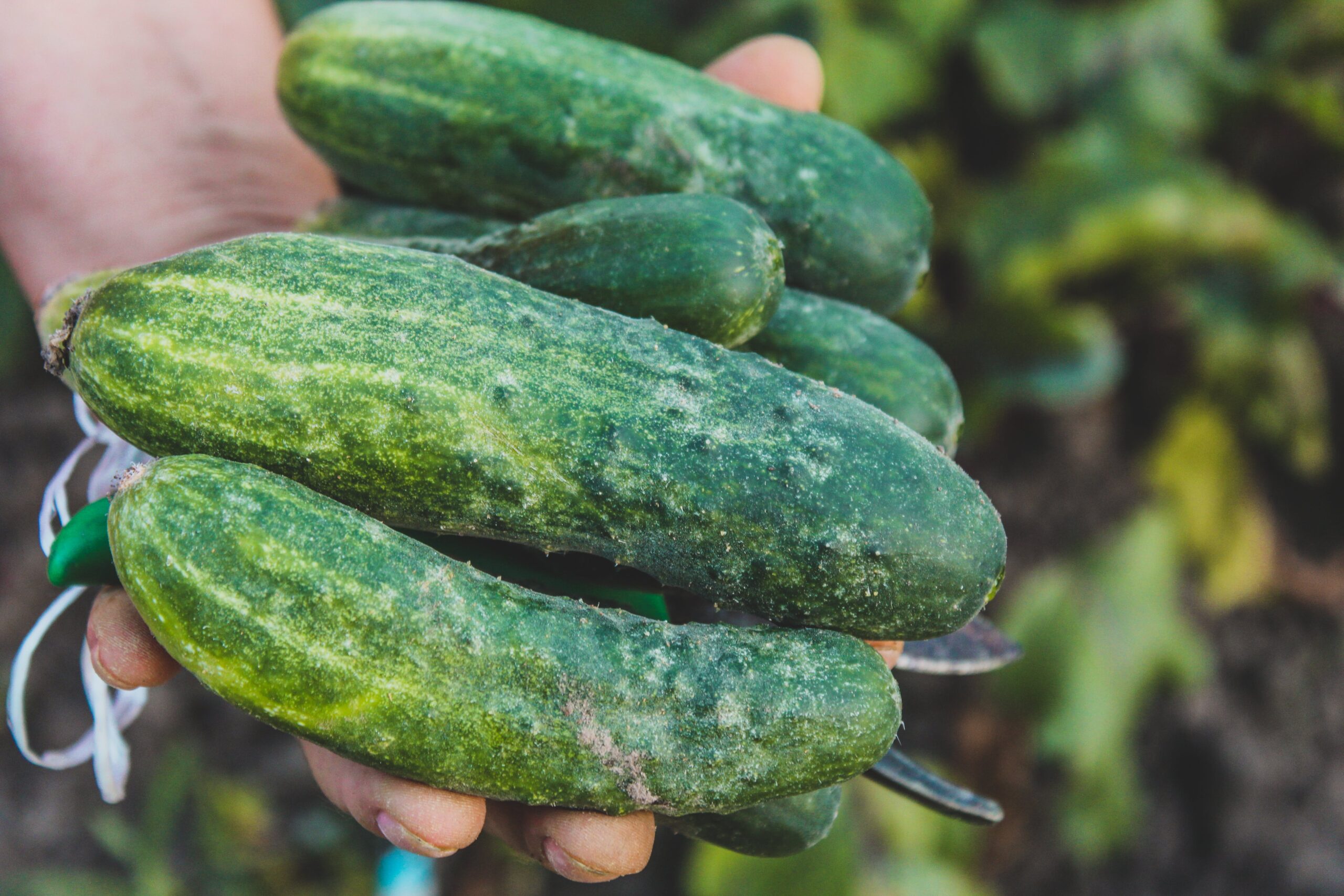
Ah, the joy of homegrown vegetables! Sun-kissed tomatoes, crisp cucumbers, and plump squashes bursting with flavor – what could be better? Well, maybe one thing: keeping those beauties safe from the dreaded powdery mildew. This dusty villain can quickly turn your leafy oasis into a battlefield, leaving you wondering if a bountiful harvest is just a dream. But fear not, fellow green thumbs! Today’s mission? Transforming yourself from a worried veggie lover into a powdery mildew-battling champion.
Powdery mildew can strike fear into anyone’s heart. But don’t let that white dust dim your green thumb! In this post, we’ll crack the code on this fungal foe, unveil its sneaky tactics, and equip you with a powerhouse arsenal of tips and tricks. From preventive measures to natural remedies (think DIY sprays and beneficial bug brigades!), we’ll cover everything you need to keep your vegetable kingdom thriving and your harvest basket overflowing.
So, grab your gardening gloves, sharpen your plant detective skills, and get ready to join me on a journey to a mildew-free paradise. Remember, knowledge is power, and with the right tools and a little strategic action, you’ll be sending that dusty villain packing in no time. Are you ready to turn the tables on powdery mildew and claim victory for your veggie patch? Buckle up, because the battle for a bountiful harvest begins now!
What Is Powdery Mildew?
Imagine sprinkling flour on your tomato leaves – that’s essentially what this fungal disease looks like. It manifests as white or gray powdery patches, usually on the upper surface of leaves, but it can also creep onto stems, buds, and even fruits. Look closer, and you might even see delicate fungal threads anchoring the dust to your precious plants.
This fungal fiend is an equal-opportunity villain, plaguing a vast array of plants. From roses and pumpkins to grapes and cucumbers, no one is truly safe. So, keep a watchful eye on your garden, especially if you’re growing any of these susceptible superstars:
- Cucumbers: Look for yellow patches with less of the powdery flair on these leafy greens.
- Squash: Similar to cucumbers, powdery mildew on squash often appears as yellow splotches.
- Melons: Keep an eye out for white or gray powdery patches on both leaves and fruits of your melons.
- Pumpkins: Just like their squash cousins, pumpkins can fall victim to yellow powdery patches or the classic white/gray dust.
- Beans: Look for white or gray powdery patches on bean leaves and stems.
- Peas: These little legumes can also be susceptible to powdery mildew, showing white or gray patches on leaves and pods.
Remember, this is just a small sampling of the many plants that can fall victim to powdery mildew. Be sure to research the specific needs and vulnerabilities of your garden superstars to keep them safe.

5 Best Ways to Prevent Powdery Mildew
Choosing resistant vegetable varieties
First things first, choose your plant allies wisely. Opt for varieties bred with built-in resistance to powdery mildew. This might mean sacrificing that rare heirloom tomato, but trust me, a healthy harvest is worth its weight in gold! Research what works best for your region and specific plants. Remember, prevention starts before you even dig the first hole.
Proper spacing and pruning
Next, think of air circulation as your secret weapon. Give your plants ample space to breathe, avoid overcrowding, and don’t be shy about pruning. This not only discourages moisture buildup but also makes it harder for powdery mildew spores to find a cozy landing spot.
Sunlight
Sunlight plays a starring role in our powdery mildew prevention play. Most plants like a good sunbath, and that’s bad news for the fungus. Aim for at least 6 hours of direct sunlight for your sun-loving veggies, and for shade-dwellers, choose varieties less prone to mildew and ensure good air circulation in their shady havens.
Moisture control and proper watering
Remember, powdery mildew loves moisture. So, strike a balance! Water deeply and less frequently, aiming for the soil, not the leaves. Early morning watering gives leaves time to dry before nightfall, making them less hospitable to fungal guests.
Mulching around your plants also helps retain moisture in the soil, reducing the need for frequent watering and creating a less welcoming environment for mildew.
Soil health
Healthy soil is the foundation of disease resistance. Nourish your soil with organic matter like compost and aged manure. These goodies promote beneficial microbes that crowd out harmful ones, including the powdery mildew culprits.
Avoid excessive nitrogen fertilizer, as it can lead to soft, new growth – a prime target for the fungus. Think of it as building a healthy soil ecosystem that naturally keeps the bad guys at bay.
How to Identify Early Signs of Powdery Mildew
Keep an eye out for those dusty patches, usually white or gray, on the upper surface of leaves. They might start small, like a sprinkle of flour, but don’t underestimate their sneaky powers – they can quickly spread and engulf the entire leaf. Look closely, and you might even see delicate fungal threads, like tiny spiderwebs, anchoring the dust to your plants.
Don’t let the foliage fool you – powdery mildew has ambitions! Check stems, buds, and even the occasional fruit for suspicious dusting. And remember, not all mildews are created equal. Some, like the one on cucumbers, might show up as yellow patches with less of the powdery flair. Be a vigilant plant detective and learn the specific mildew signs for your garden superstars.
Steps to take upon initial detection of mildew
So, you’ve spotted the powdery culprit – now what? Don’t panic! The sooner you act, the better. Start by isolating the infected plant, preventing those sneaky spores from spreading to their leafy neighbors.
Then, gently remove the affected leaves and stems, being careful not to shake the spores around. Dispose of them properly, preferably in a sealed bag or away from your compost pile.
Now’s the time to double down on those preventive measures we discussed earlier. Improve air circulation by thinning your plant ranks or trimming foliage. Water thoughtfully, aiming for the soil and letting leaves dry quickly.
Consider organic fungicides like neem oil or a baking soda solution as a gentle first line of defense. Remember, consistent care and early action are your best weapons against powdery mildew.
Natural and Chemical Treatment Options
Before reaching for harsh chemicals, let’s tap into the power of natural remedies. These gentle giants can often effectively manage mild to moderate mildew infestations, and they’re kinder to your plants and the environment. Here are some DIY sprays you can whip up in your kitchen:
- Baking soda blitz: Mix one tablespoon of baking soda with half a teaspoon of liquid soap (not detergent!) in a gallon of water. Spray generously on both sides of the leaves, ensuring good coverage. This simple solution disrupts the fungal growth and can be reapplied every 7-10 days.
- Milky magic: Yes, you read that right! Mix one part milk with two to three parts water and spray this milky concoction on your affected plants. The lactic acid in milk disrupts the fungal spores and can be a surprisingly effective weapon. Just remember, avoid using milk on cucurbits like zucchini and pumpkins, as they can be sensitive.
- Neem for the win: This natural oil extracted from the neem tree boasts antifungal properties. Mix one teaspoon of neem oil with a gallon of water and a few drops of liquid soap for better adherence. Spray thoroughly, being careful to avoid applying in direct sunlight or on hot days.
Don’t forget the power of your garden’s natural allies! Ladybugs, lacewings, and hoverflies are all avid devourers of powdery mildew spores and other garden pests. Attract these beneficial insects by planting companion flowers like dill, fennel, and alyssum, and avoid using broad-spectrum insecticides that harm both the good and the bad bugs.
Chemical Fungicides: When and How to Use the Big Guns
While natural remedies are often our first line of defense, sometimes the fungal foe requires a more potent approach. Chemical fungicides can be effective in controlling severe mildew outbreaks, but remember, they should be used with caution as a last resort. Here’s what to keep in mind:
- Read the label carefully: Different fungicides have different target fungi and application instructions. Choose one specifically labeled for powdery mildew on vegetables.
- Follow the dosage instructions precisely: Overusing fungicides can harm your plants and pollute the environment. Stick to the recommended dosage and frequency of application.
- Apply only when necessary: If the natural remedies are keeping the mildew under control, there’s no need to resort to chemicals. Remember, prevention is always better than cure!
- Safety first: Wear gloves and protective clothing when handling fungicides, and avoid spraying on windy days to prevent drift.
Remember: When using chemical fungicides, prioritize organic options whenever possible. These are less harmful to beneficial insects and the environment. And always, always be mindful of the potential risks involved.
Ongoing Management and Monitoring
Just because you’ve won one battle doesn’t mean the war is over. Make regular inspections of your plants a top priority. Every few days, walk through your garden, casting a keen eye on leaves, stems, and even fruits.
Remember those telltale dusty patches, yellow splotches, and delicate fungal threads? If you see any suspicious signs, act fast! Isolate the infected plant, remove affected parts, and consider a gentle reapplication of your DIY spray or neem oil solution.
Knowledge is power, and in the fight against powdery mildew, records are your friends. Keep a garden journal to track your observations. Note down when you first spotted mildew, what remedies you used, and the weather conditions at the time. This information can be invaluable in predicting future outbreaks and adjusting your strategies.
Did baking soda work best, or was neem oil more effective? Did that shady corner seem particularly prone to mildew? By analyzing your past experiences, you can fine-tune your approach and keep the fungus at bay.
Remember, powdery mildew is a crafty critter. What worked one year might not be as effective the next. Be prepared to adapt and evolve your strategies. If certain areas seem like mildew hotspots, consider changing the plant layout or improving air circulation.
Maybe your watering schedule needs tweaking, or perhaps you need to introduce more beneficial insects to your garden ecosystem. Don’t be afraid to experiment and find what works best for your specific garden and climate.
Final Thoughts: How to Prevent Powdery Mildew
We’ve demystified the powdery mildew menace, equipped ourselves with a powerful arsenal of preventative measures and natural remedies, and even learned how to wield the (gentle) chemical hammer when absolutely necessary. Remember, with vigilance, proactive care, and a little know-how, you can keep your vegetable kingdom a flourishing haven, forever free from the clutches of this dusty fiend.
But hey, let’s not forget the most important part: the sweet victory of a bountiful harvest! Imagine biting into a juicy tomato, sun-warmed and free of any powdery surprises. Picture those glistening cucumber slices in your refreshing salad, crisp and delicious. Each healthy, thriving vegetable is a testament to your dedication and your triumph over the mildew monster.
So, keep calm and garden on! And if you ever encounter any powdery mildew mischief, don’t hesitate to reach out. I’m always here to cheer you on and offer another tip or two in your quest for a flourishing, mildew-free veggie patch. Happy gardening!


![10 Ways to Get Rid of Cabbage Worms From Your Garden [Naturally & Efficiently]](https://homeveggiegarden.com/wp-content/uploads/2023/12/pexels-lina-kivaka-14281758-600x850.jpg)


